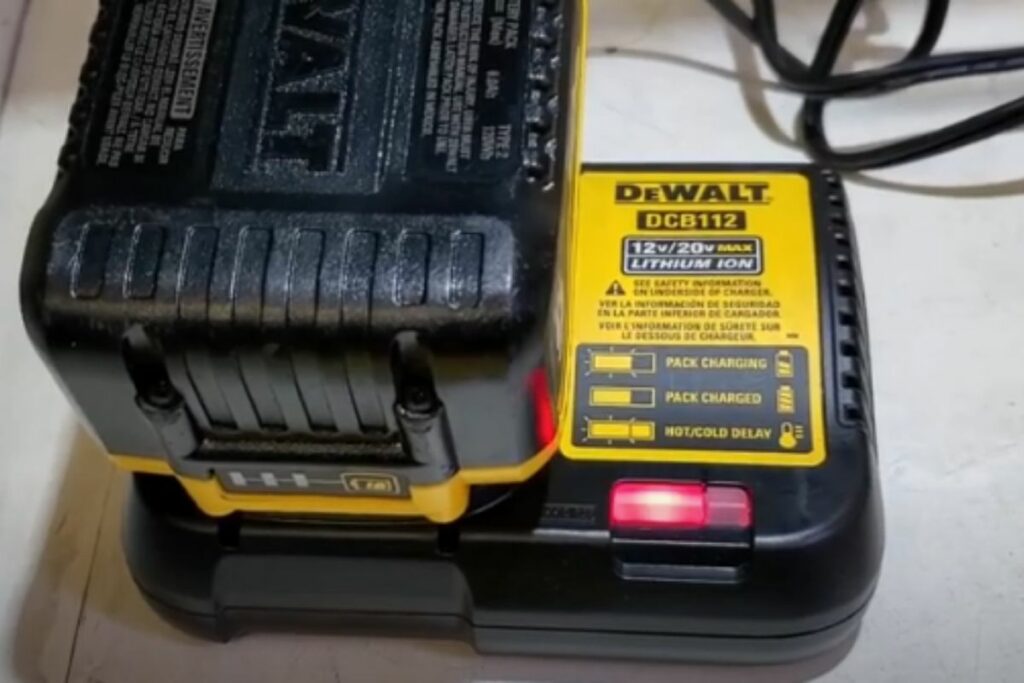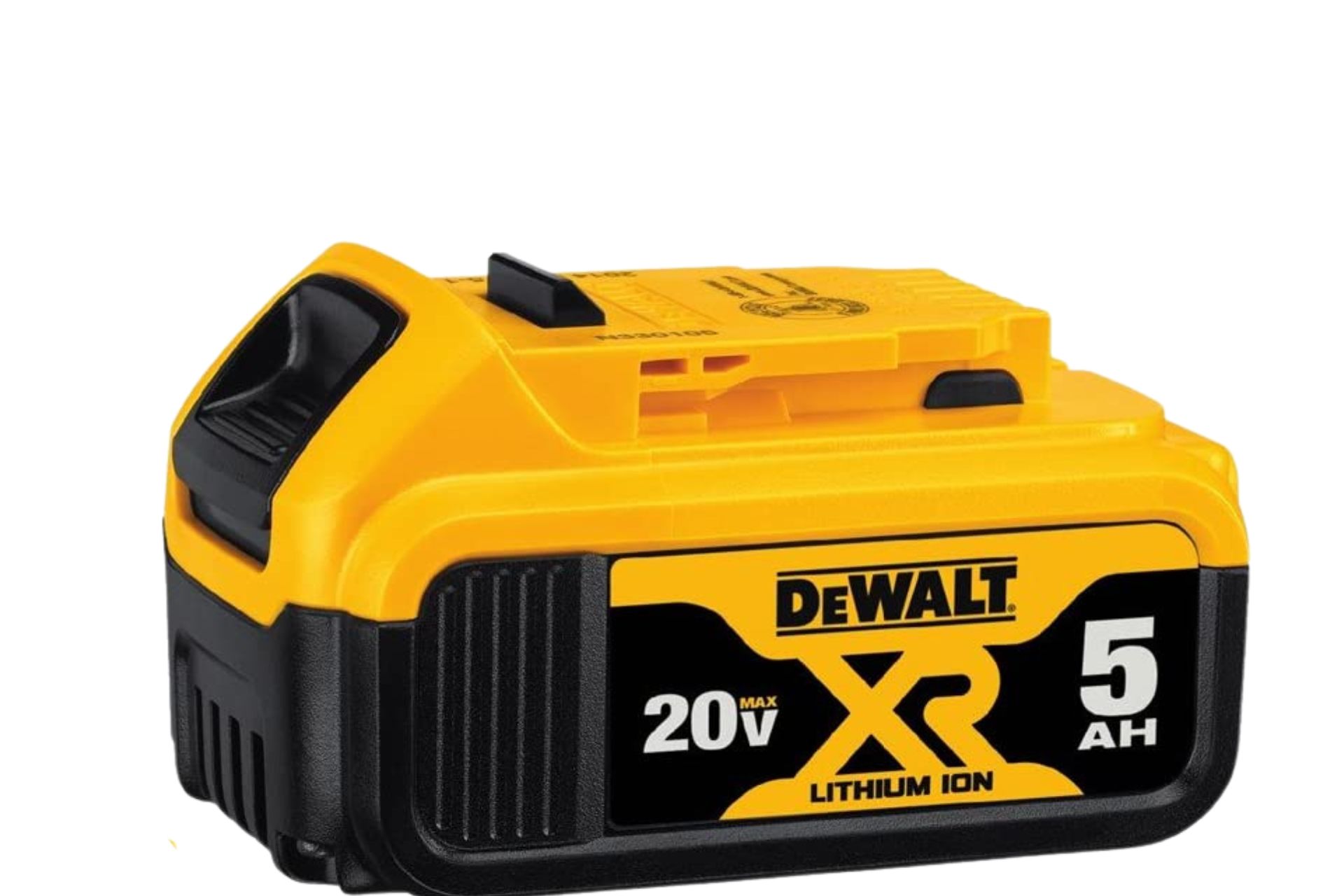Prescient And Strategic intelligence say that the power tool market is growing exponentially. Therefore, you probably own a Dewalt power tool.
A battery has a positive terminal, a negative terminal, and an electrolyte. BYJUS calls the negative terminal the cathode. The electrons come from the cathode. The positive terminal is the anode, and it receives the electrons.
A paper in the Journal of Energy Chemistry highlights the dangers batteries attract when you mishandle them. The most problematic is fires and explosions. But such outcomes occur because of extreme temperatures, breaks and tears, and the like.
Your battery won’t explode because you reversed the polarity. You may notice sparks in extreme circumstances. However, most of the time, the power tool will simply refuse to work.
But that is not an excuse to mix up the terminals. Fortunately, you have numerous methods at your disposal for identifying the terminals, including the following:
1). Labels
Manufacturers usually label their batteries. Look for a plus or minus sign. The language on the packaging may change depending on the origins of the battery. However, the ‘+’ and ‘-’ signs are easy to interpret. Their meaning doesn’t change.
2). Design
If you check the manual, it will show you how to determine the polarity. For instance, the shape of each terminal may vary. You see this in power plugs where one prong is longer and slightly wider than the others.
3). Color
Some manufacturers assign a unique color to each terminal. Once again, check the manual to figure out what each color means. Don’t base your interpretation on what other people say. What if their information is outdated? Don’t take any chances. The manual will tell you what you need to know.
4). Multimeter
Laypeople confuse multimeters with voltmeters. You can touch the red and black probes of a voltmeter to the battery’s terminals. But according to Home Steady, this will only tell you whether or not the battery has power. To determine the polarity with a multimeter, use the following steps:
- Get a multimeter and connect the red probe to the first terminal and the black probe to the second terminal.
- If you see a number with a minus symbol, the red probe is touching the negative terminal. The black probe is touching the positive terminal.
- Reverse the order to confirm the results. Connect the red probe to the second terminal and the black probe to the first terminal.
- You should see the same number but with no minus sign. This confirms that the second terminal is positive and the first terminal is negative.
El Chano Jose has a video showing you how to test a Dewalt battery and interpret the results.
Once you identify the terminals, label them to prevent confusion in the future. You can consult a professional.
They have the knowledge and experience to determine a battery’s polarity without relying on a manual. Ask them to connect the battery to the power tool in the correct orientation and take a picture. Use the picture to remember the right direction of the battery the next time you forget.
The point of identifying the battery’s terminals is to insert it in a power tool or charger in the correct direction. The power tool won’t work unless you attach the battery in the proper orientation. This is also true for the charger.
The battery won’t charge unless you attach it in the correct orientation. This is why manuals include diagrams showing what the battery should look like when you connect it to a power tool or charger.
How To Use A Dewalt Battery In A Tool?
You don’t have to worry about polarity when using a tool. Yes, the power tool won’t work if you get the terminals wrong. However, battery packs have mounting components that can only slide into a power tool in a specific way.
In other words, the battery pack won’t even enter if you get the orientation wrong. Or if it enters, you will encounter resistance. Dewalt TV has a video showing consumers how to pair a Flexvolt 20V/60V battery with various power tools.
As you can see, it is a simple matter of sliding the correct section of the battery pack in or around the appropriate slot on the power tool. You shouldn’t overthink this issue. The layperson doesn’t need to know the terminals.
Although, the polarity may enter the picture if you take Brian Wingard’s advice and introduce an adapter. An adapter allows you to mix and match batteries and tools from different brands. But even then, your only task is to slide the adapter into the correct slot on the battery. Wingard’s video proves as much.
This Dewalt guide warns that fires can start when a battery’s terminals touch conductive materials such as coins. This is why the U.S. Department of Transportation has classified lithium batteries as a hazardous material. They won’t let you transport your Dewalt batteries in suitcases on planes. But identifying the polarity won’t help you prevent fires in such situations.
How To Use Dewalt Battery In Charger With Correct Battery Terminals?

Charging a Dewalt battery typically involves the following:
- Connect the charger to an electrical outlet. Make sure the circuit meets the charger’s voltage requirements.
- Take the battery out of the tool and slide it into the charger’s dock. Pay attention to the direction.
- Turn the charger on. The LED indicator will illuminate to confirm that the battery is charging. Whether it blinks or remains steady depends on the model.
- The LED indicator will alert you when the battery is full.
Like the power tool, you don’t have to overthink the process of inserting a battery into a charger. The battery can only slide into the charging dock if the direction is correct. Otherwise, it won’t enter. Try to keep the following in mind:
- Match the brands. Use Dewalt batteries in Dewalt tools and chargers. Dewalt batteries can work with tools from other brands. But such interchangeability is discouraged. Even if the tool works, the manufacturer may void your warranty.
- Match the specs, especially the voltage. Don’t use a battery with a higher voltage in tools with a lower rating.
- Mister Worker encourages consumers to charge their Dewalt batteries after using a tool. You don’t have to wait for the battery to deplete completely to charge it. Despite what some laypeople think, you won’t damage the battery by frequently charging it. In fact, you damage the battery by letting it discharge completely.
- You can leave a full Dewalt battery in a Dewalt charger. Once the battery is full, the charger will enter maintenance mode. It won’t overcharge the battery.
- The battery will stop charging if the internal temperature is too high. The charging process will only resume when the temperature drops.
- To give each individual cell a full charge, Dewalt suggests leaving the battery in the charger for eight hours.
- A Dewalt battery that can’t hold its charge for the rated duration should be replaced. It has reached the end of its lifespan. Dewalt batteries have a lifespan of roughly three years. You can fix some Dewalt batteries by opening them and cleaning the corrosion.

